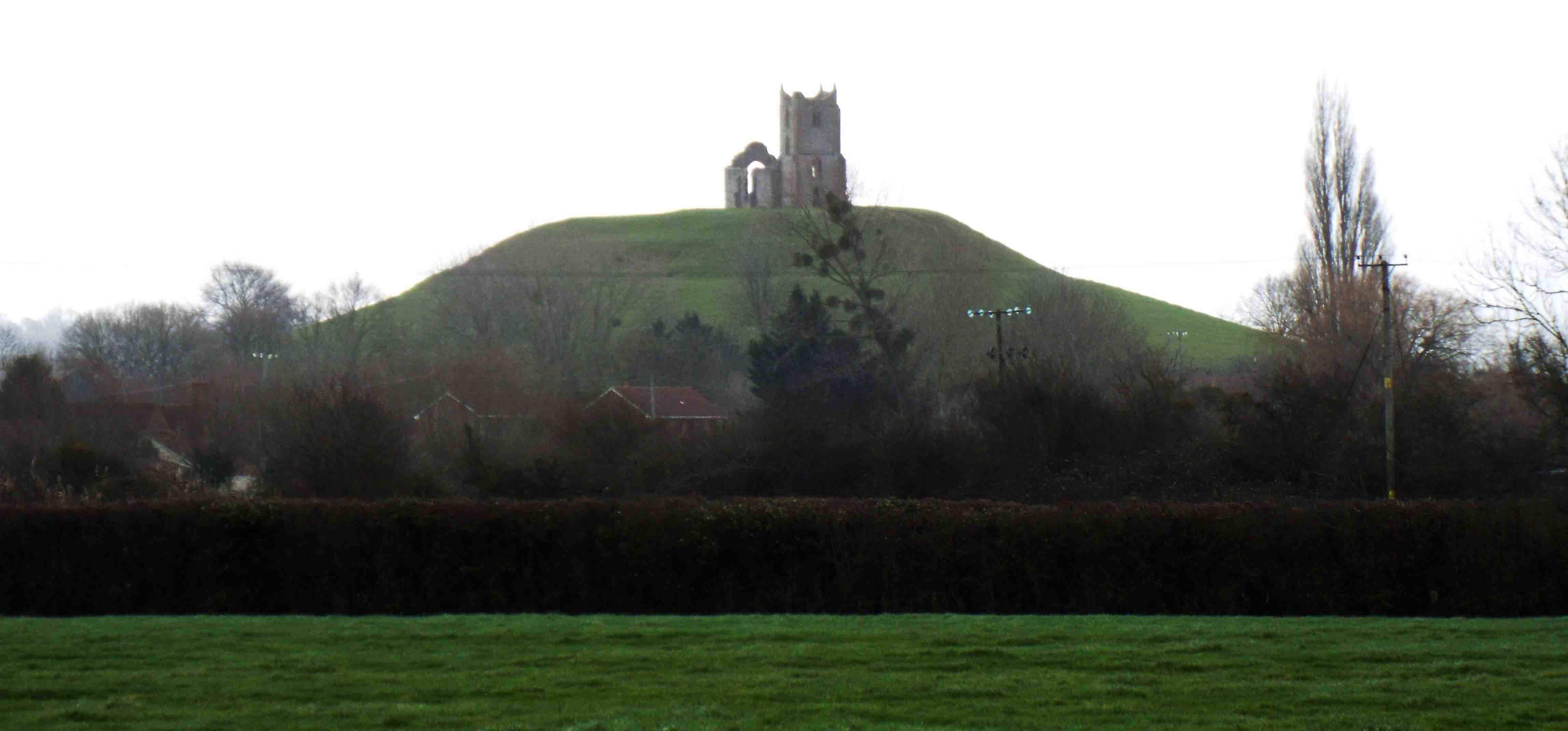Athelney Burrow Mump

Although not strictly a castle, the fortification at Athelney, known as
Burrow Mump, has a long history. The site may have been occupied
from Roman times, with a coin hoard being found on the north-north-east
side of the Mump around 1860. In this respect it is somewhat
similar to Crookbarrow Hill, otherwise known as Whittington Tump, just
south of Worcester. The recorded history at Athelney begins after
Easter 878 when King Alfred (d.899) built a fortification there with
the small troop of soldiers he had with him. He then used this
fortification, bolstered by the Somerset men from those parts nearest
to it, in making war against the Viking raiding army. In his life
of Alfred, Bishop Asser, who had visited the site, stated that the
fortress was reached by a bridge or causeway fortified at either end,
the fort being at the western, landward side as ‘a formidable
fortress of elegant workmanship'. The Mump, of course, lies to
the east of the abbey and is linked to it by a causeway.
According to a probably fourteenth century forgery, the fortress was
called Ethelingaeigge.
If Alfred had fortified the hill as a burgh it was abandoned by 937
when it was given to Athelney abbey. This had been refounded and
enlarged by Alfred in 888, ten years after the 878 campaign. The
land in 937 was known as Toteyate
and was a part of the manor of Lyng. Athelney abbey and its vill
of Lyng appear in Domesday Book, but there is no mention of Burrow,
although Montacute castle, a little over
13 miles away, is noted as founded on Athelney's lands. There are
similarities between both ‘castles'.
Around 1480 William Worcester wrote of Myghell-borough
hill and by 1544 the church was known as St Michelborowe soon after the
dissolution of Athelney abbey. It therefore appears possible that
the hill name modified from an unmentioned burgh to borough to and
finally by 1544 barrow. The age of the church on the hill is
unknown, but it obviously predated 1480 by which time the site was
associated with St Michael (Myghell). The current church was built in 1793.
A modern speculation has been made that the site was a Norman or
Adulterine castle. There is no evidence for this and indeed it
seems unlikely, manly likely hills being so named in the attempt to
fill in 1,115 castles allegedly destroyed by Henry II. Therefore,
in all probability, this was an Alfredian burgh. To support this is the
name of Burrow, which seems to have been a corruption of burgh.
In conclusion, the lack of any suitable place elsewhere in or around
Athelney to be Alfredian burgh strongly suggests that this was his
site. As such this should remain as the only logical deduction
until a modern excavation is undertaken to confirm or deny the
speculation.
Description
The possible burgh of Athelney encompasses a hill 80' high. This
has a scarped summit forming an irregular oval ditch about 150' by 80'
and some 15' deep. The mound commands the marshy area where the
rivers Tone, Cary and Parrett once met, before the area was
drained. Excavation in 1939 uncovered square pits, one of which
was thought to have been a well. There were also postholes and
what was thought to have been traces of an earlier masonry church
containing a crypt as well as a burial with a lead bullet beside it,
probably of civil war date. A wall foundation on a different
alignment to the church was found with ‘early Medieval pottery'
and this was therefore interpreted as evidence for a ‘Norman
castle'. A further excavation using modern techniques might well
answer the problem as to what was actually here.
A spiral path running from the western foot of the hill, curved up the
southern side of the mound towards the summit of the hill where it
fades out in the east some 25' short of the ditch. This may have
been similar to the path still to be seen at Criccieth castle.
There may be another line of defence around the base of the mound
protecting both field and settlement features on the lower
slopes. Again this site should be compared with Montacute, a castle of Count Robert Mortain who is also credited with founding Berkhamsted castle and may have founded Launceston.
Copyright©2021
Paul Martin Remfry

